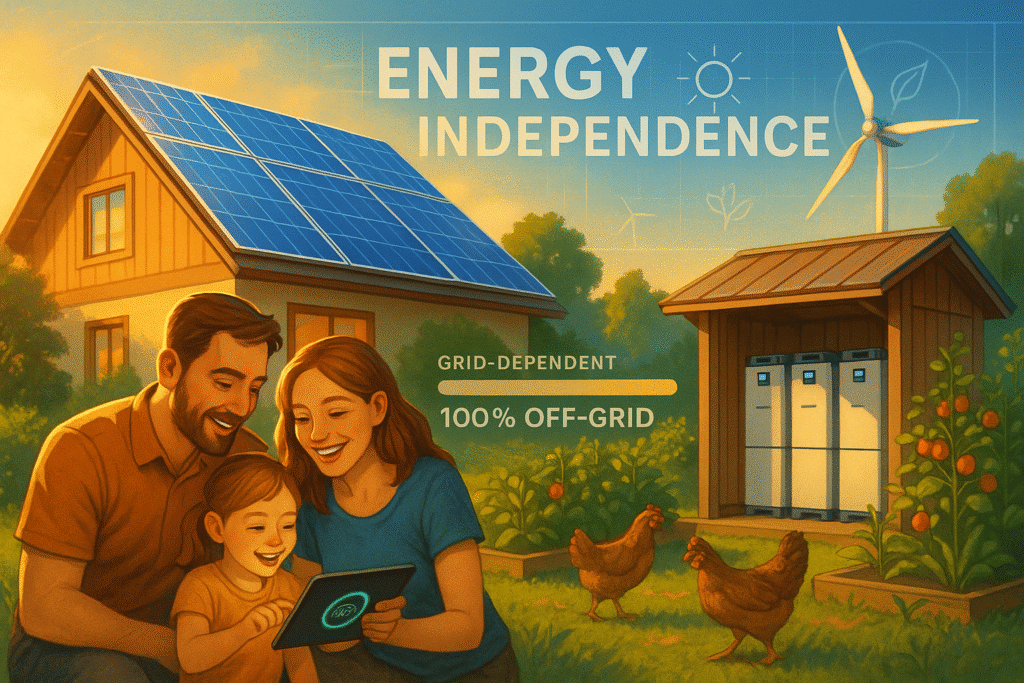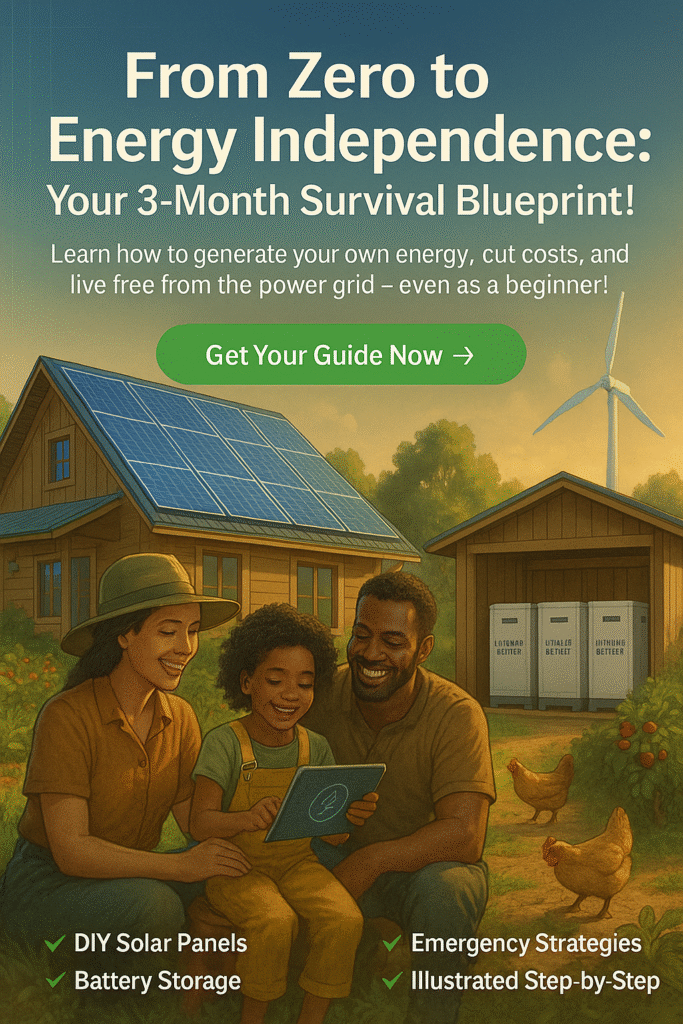
In an era of rising energy costs, environmental concerns, and increasing grid instability, achieving energy independence has become a critical goal for many households. Whether you’re preparing for emergencies, reducing your carbon footprint, or simply cutting utility bills, transitioning to self-sufficient energy systems is a powerful step toward resilience and freedom.
This guide provides a beginner’s survival blueprint for going from zero to energy independence in three months (3M). We’ll cover essential steps, from assessing your energy needs to selecting the right renewable systems, storage solutions, and backup strategies. By the end, you’ll have a clear roadmap to break free from reliance on the grid.
Step 1: Assess Your Energy Needs
Before investing in any energy system, you must understand how much power you consume daily.
1.1 Calculate Your Energy Usage
- Review past electricity bills to determine your average monthly kWh usage.
- Use an energy monitor (like a Kill-A-Watt meter) to track real-time consumption of appliances.
- Identify critical loads (refrigerator, lights, medical devices) vs. non-essential devices (entertainment systems).
1.2 Prioritize Efficiency
- Replace incandescent bulbs with LEDs (saves up to 80% on lighting).
- Upgrade to Energy Star-rated appliances.
- Eliminate phantom loads by unplugging devices or using smart power strips.
By reducing consumption first, you’ll need a smaller (and cheaper) energy system.
Step 2: Choose Your Energy Sources
The most common off-grid energy systems include solar, wind, and micro-hydro power. For beginners, solar is often the easiest and most scalable.
2.1 Solar Power (Photovoltaic Systems)
- Pros: Low maintenance, scalable, works in most climates.
- Cons: Requires sunlight, battery storage for nighttime.
Components Needed:
- Solar panels (monocrystalline = more efficient, polycrystalline = cheaper).
- Charge controller (PWM = basic, MPPT = more efficient).
- Batteries (lead-acid = affordable, lithium-ion = longer lifespan).
- Inverter (converts DC to AC for household appliances).
Sizing Your System:
- A 1kW solar system (3-4 panels) can power lights, a fridge, and small electronics.
- For full-home backup, 5kW-10kW systems may be needed.
2.2 Wind Power (For Windy Areas)
- Best for locations with consistent 10+ mph winds.
- Small turbines (300W-1kW) can supplement solar.
2.3 Micro-Hydro (If You Have a Stream)
- Provides 24/7 power if water flow is steady.
- Requires permits and proper installation.
Hybrid Systems (Solar + Wind or Generator Backup)
- Ensures reliability when one source underperforms.
- A propane/gas generator can serve as emergency backup.
Step 3: Energy Storage Solutions
Since solar and wind are intermittent, batteries store excess energy for later use.
3.1 Types of Batteries
- Lead-Acid (Flooded or AGM)
- Cheaper but requires maintenance.
- Lasts 3-5 years.
- Lithium-Ion (LiFePO4)
- More expensive but lighter, longer-lasting (10+ years).
- No maintenance, deeper discharge capability.
3.2 Battery Bank Sizing
- Calculate daily watt-hours needed (e.g., 5kWh/day).
- Ensure battery bank can store at least 2-3 days of power for emergencies.
Step 4: Install and Test Your System
4.1 DIY vs. Professional Installation
- DIY: Cheaper but requires electrical knowledge.
- Professional: Ensures safety and compliance with local codes.
4.2 Key Safety Considerations
- Proper grounding to prevent electrical surges.
- Circuit breakers between components.
- Fireproof battery enclosure (especially for lead-acid).
4.3 Test Before Going Fully Off-Grid
- Run critical loads for 48 hours to ensure stability.
- Monitor battery levels to avoid deep discharges.
Step 5: Maintain and Optimize
5.1 Regular Maintenance
- Solar panels: Clean every 3-6 months.
- Batteries: Check water levels (if lead-acid), ensure proper ventilation.
- Wind turbines: Inspect blades and bearings annually.
5.2 Expand as Needed
- Add more panels/batteries if energy needs increase.
- Integrate smart energy management systems (like Tesla Powerwall).
Step 6: Achieve Full Energy Independence
Once your system runs smoothly:
✅ Disconnect from the grid (if desired).
✅ Monitor performance with energy-tracking apps.
✅ Consider selling excess power back to the grid (if net metering is available).
Final Thoughts
Transitioning to energy independence in three months is ambitious but achievable with the right plan. By reducing consumption, choosing the right energy sources, storing power efficiently, and maintaining your system, you can break free from utility dependence and gain true energy resilience.
Start small, scale up, and enjoy the freedom of true energy independence!
Would you like a downloadable checklist or tool recommendations? Let me know in the comments!
This 1,500-word guide provides a step-by-step survival blueprint for achieving energy independence in three months. Let me know if you’d like any modifications! 🚀

u

